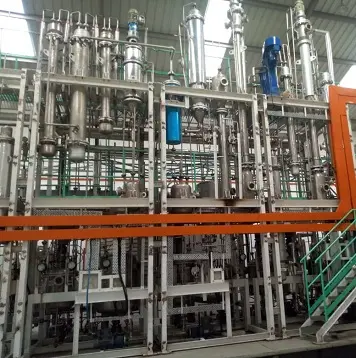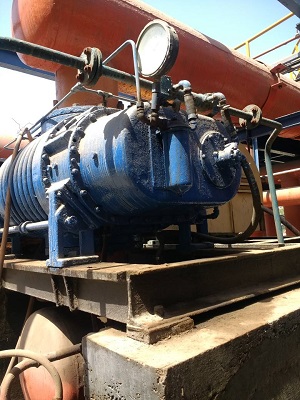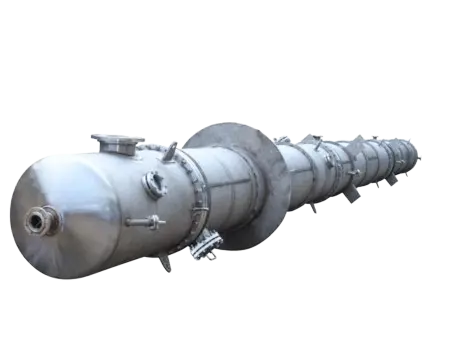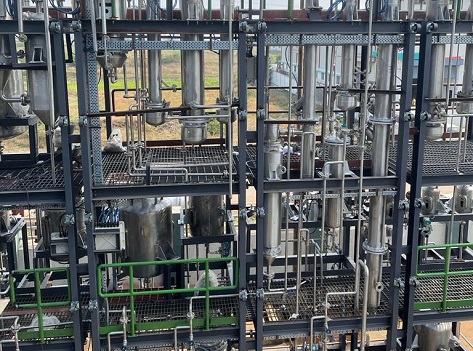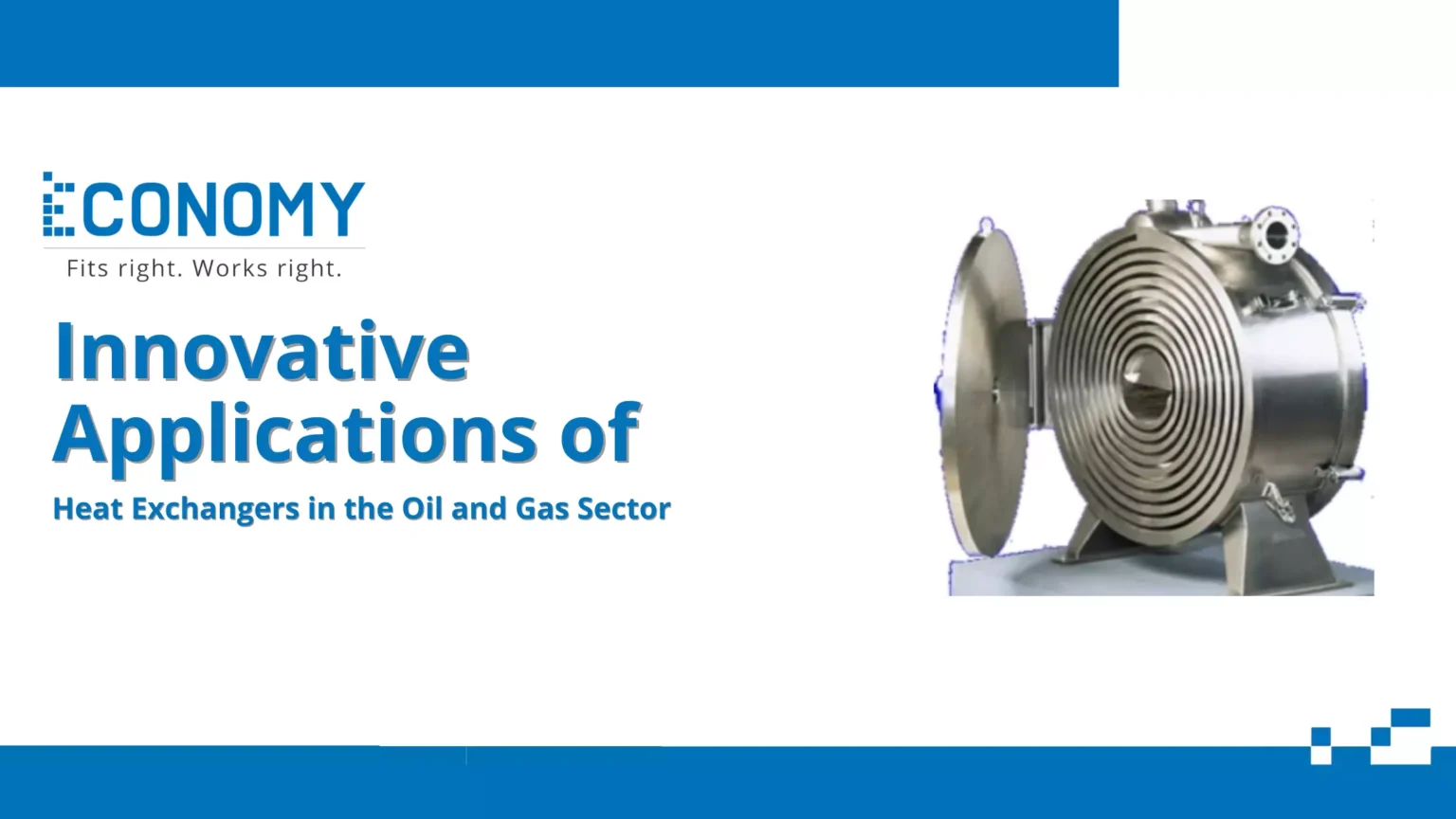
Innovative Applications of Heat Exchangers in the Oil and Gas Sector
In the realm of industrial processes, heat exchangers play a crucial role in ensuring the efficient transfer of heat between fluids. These ingenious devices have become indispensable in a wide range of industries, including the oil and gas sector.
In this blog post, we will delve into the innovative applications of heat exchangers in the oil and gas industry, exploring their role, types, and the materials used in their construction.
The oil and gas sector operates under demanding conditions, where maintaining optimal thermal conditions is paramount. Heat exchangers serve as key components in this sector, facilitating heat transfer and maintaining the desired temperatures required for efficient operations. Whether it is in drilling, refining, or processing, heat exchangers play a crucial role in ensuring the smooth functioning of various processes by effectively managing heat.
Heat exchangers help in the oil and gas sector by:
- Cooling: Heat exchangers assist in cooling various components and systems, preventing overheating and ensuring the longevity of equipment. For example, in gas compression stations, heat exchangers cool down the gas before it enters the compressor, reducing the risk of damage.
- Condensation: Heat exchangers aid in the condensation of vaporized hydrocarbons, increasing the efficiency of distillation columns. They facilitate the separation of valuable components from raw materials in refining processes, contributing to the production of high-quality petroleum products.
- Heating: Heat exchangers are instrumental in heating processes, such as in crude oil heating and preheating fuel for combustion. By transferring heat from one fluid to another, they optimize energy utilization and enhance overall efficiency.
Types of Heat Exchangers Used in the Oil and Gas Sector:
The oil and gas sector relies on various types of heat exchangers, each designed with specific applications in mind. Let’s explore some of the most commonly used types:
1. Shell and Tube Heat Exchangers:
Shell and tube heat exchangers are the workhorses of the oil and gas industry. They consist of a shell (outer vessel) and multiple tubes placed inside it. The fluids flow through the tubes and the shell, allowing efficient heat exchange. These heat exchangers are highly versatile and can handle high pressures and temperatures, making them ideal for a wide range of applications.
Advantages of Shell and Tube Heat Exchangers:
– Suitable for high-pressure operations
– Can handle high temperature differentials
– Easy to maintain and clean
Disadvantages of Shell and Tube Heat Exchangers:
– Limited heat transfer efficiency in some cases
– Bulky design, requiring ample space for installation
2. Spiral Heat Exchangers:
Spiral heat exchangers are compact and highly efficient heat transfer devices. They consist of a circular heat exchanger with two concentric spiral channels, one for each fluid. The curved channels provide optimum heat transfer and flow conditions for a wide variety of fluids, while keeping the overall size of the unit to a minimum.
Spiral condenser provides a low pressure drop in vapour side due to direct flow. It has cross flow to get maximum heat transfer coefficient.
This design allows for a large surface area, facilitating efficient heat transfer. Spiral heat exchangers are commonly used in applications where space is limited.
Advantages of Spiral Heat Exchangers:
– Compact design, ideal for space-constrained environments
– Excellent heat transfer efficiency
– Easy to clean and maintain
Disadvantages of Plate Heat Exchangers:
– Limited suitability for high-pressure and high-temperature applications
– Prone to fouling, requiring regular cleaning and maintenance
3. Finned Tube Heat Exchangers:
Finned tube heat exchangers are specifically designed for applications where enhanced heat transfer is required. The tubes are equipped with finned surfaces, which increase the surface area available for heat exchange. These heat exchangers find applications in processes involving gases or fluids with low heat transfer coefficients, such as natural gas processing.
Advantages of Finned Tube Heat Exchangers:
– Enhanced heat transfer efficiency
– Suitable for applications involving gases and low heat transfer coefficients
– Can handle high gas velocities
Disadvantages of Finned Tube Heat Exchangers:
– Limited suitability for high-pressure operations
– More prone to fouling compared to other types
Materials Used in Heat Exchangers for the Oil and Gas Sector:
The materials used in the construction of heat exchangers for the oil and gas sector are carefully chosen to withstand the harsh operating conditions and ensure long-term reliability.
Let’s explore some commonly used materials:
1. Carbon Steel:
Carbon steel is widely used in heat exchangers due to its excellent mechanical properties and cost-effectiveness. It can withstand high temperatures and pressures, making it suitable for various applications in the oil and gas industry.
However, carbon steel is susceptible to corrosion, requiring protective measures such as coatings or sacrificial anodes.
2. Stainless Steel:
Stainless steel is chosen for its superior resistance to corrosion, especially in environments with high chloride content. It offers excellent mechanical strength and can withstand high temperatures and pressures. Stainless steel heat exchangers are commonly used in offshore oil platforms and coastal processing facilities.
3. Nickel Alloys:
Nickel alloys, such as Inconel and Hastelloy, are highly corrosion-resistant materials used in heat exchangers for aggressive environments. These alloys exhibit exceptional resistance to pitting, crevice corrosion, and stress corrosion cracking. Nickel alloys are often employed in processes involving sour gas or corrosive liquids.
Innovative Applications of Heat Exchangers in the Oil and Gas Sector
1. Cracking:
Heat exchangers are extensively used in the cracking process, where hydrocarbon molecules are broken down into smaller, more valuable products. By transferring heat from hot gases to the feedstock, heat exchangers facilitate the cracking reactions at high temperatures, increasing the yield of desired products.
2. Atmospheric Distillation:
Heat exchangers are employed in atmospheric distillation, a key process in oil refining. By transferring heat to crude oil, they facilitate the separation of different hydrocarbon fractions based on their boiling points, leading to the production of various refined products.
3. Heat Removal from Gas Streams:
Heat exchangers are utilized to cool down gas streams in the oil and gas sector. By transferring heat to a separate cooling medium, such as water or air, heat exchangers remove excess heat from gas streams before further processing or transportation, ensuring equipment integrity and safety.
Real-Life Examples of Innovative Heat Exchanger Applications
1. Shell and Tube Heat Exchangers:
Shell and tube heat exchangers are widely used in the oil and gas sector due to their versatility and efficiency. In an innovative application, a shell and tube heat exchanger was utilized to recover waste heat from a gas turbine exhaust and preheat the feedwater for a steam generator, resulting in improved energy efficiency and reduced fuel consumption.
2. Spiral Heat Exchangers:
Plate heat exchangers are gaining popularity in the oil and gas industry due to their compact size and excellent heat transfer capabilities. An innovative application for a Spiral heat exchanger could be in recovering heat from a natural gas compressor discharge, preheating the incoming gas stream and reducing the need for additional heating equipment.
Heat exchangers have revolutionized the oil and gas sector by enabling innovative applications that enhance energy efficiency and reduce environmental impact. The advantages of high heat transfer coefficients have paved the way for more compact and efficient heat exchangers. From cracking and atmospheric distillation to heat removal from gas streams, heat exchangers play a vital role in various processes within the oil and gas sector.
As the industry continues to evolve, we can expect further advancements in heat exchanger design and technology, leading to even greater energy savings and environmental sustainability.
By embracing these innovative applications, the oil and gas sector can continue to thrive while minimizing its carbon footprint.




